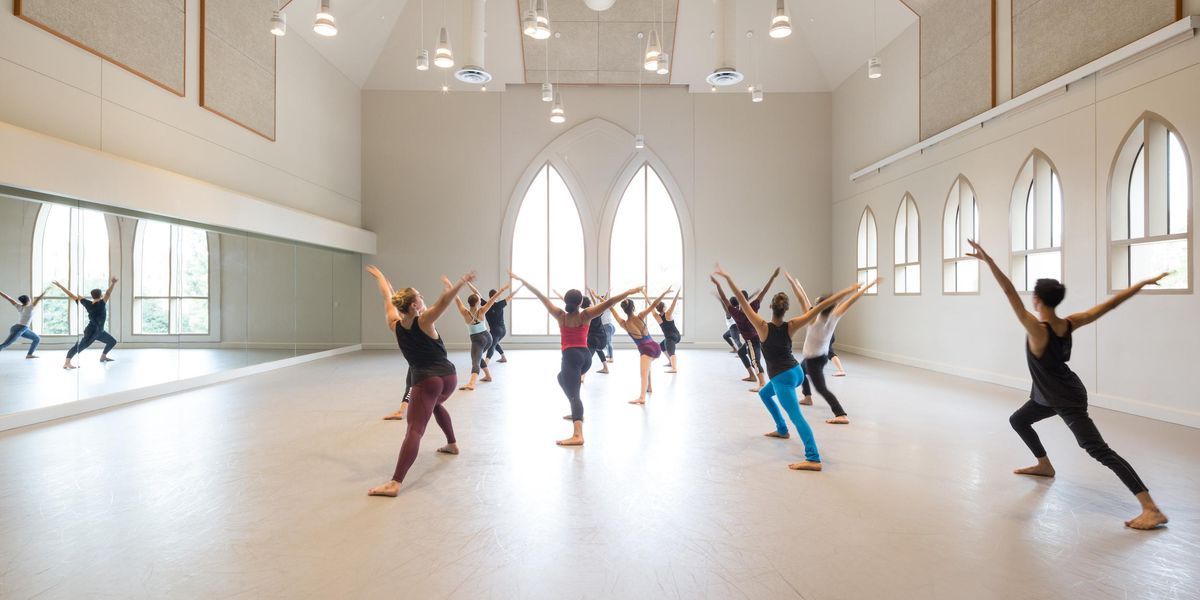Ballet West
The Capitol Theatre
Salt Lake City, UT
November 2–10, 2012
Performances reviewed: Nov. 9; Nov. 10, matinee and evening
It seemed a bizarre choice for a narrative on which to base a ballet, but in Val Caniparoli’s hands, The Lottery turned out to be not only an interesting ballet but also a phenomenon all its own. Known for its depiction of a small town’s sudden brutality against a single person, this famous short story by Shirley Jackson has echoes of the communal sacrifice of The Rite of Spring. While the music by Robert Moran is not as earth-shattering as Stravinsky’s Sacre, it does embed moments of foreboding right from the start.
We see a white picket fence and lovely neighbors dressed in 50s-style shirtwaist dresses (costumes and set by the excellent Sandra Woodall). The ballet begins with the cast of 14 happily gathering rocks with a festive air. Later, each of the seven couples has their own dance, some of them overlapping.
In a stroke of brilliance, Caniparoli decided that that the lottery would literally be drawn anew each night. He cannily dramatized the ordeal: The villagers, standing in a circle, unfold their lots so others can see it. The person who draws the fatal lot only sees the result reflected in the eyes of the others. At that moment we see the dancers’ skill at improvising. It’s mind-bending that the performers don’t know who will dance the final frenetic solo until that circle.
Jackson’s comment on the horrifying arbitrariness of society’s violence comes through loud and clear, but made palatable by Caniparoli’s theatrical craft—and by the excellent dancers themselves.
Nicolo Fonte starts his Bolero (2008) before the music, with some kind of recorded hum. Christiana Bennett brought a ravishing sense of weight to the opening duet, but by the end she (along with others) was smiling lightheartedly just as Ravel’s famous music gained gravitas and grandeur. After that duet, there were only hints of Fonte’s gift for complex movement.
The unusual choice of steadily emptying out the space (Michael Mazzolla’s silver panels lift and disappear midway through) while the music fills up—and those smiles—undercut the power of the climax. The crashing of the cymbals found no reflection in the dance. Visually there was no momentum—the dancers were mostly equidistant from each other—so the choreography was overshadowed by the insistent march of the music (played live by the Utah Chamber Orchestra).
Arolyn Williams and Christopher Sellars in Helen Pickett’s
But Never Doubt I Love.
Photo by Luke Isley, Courtesy Ballet West.
But Never Doubt I Love
(2010), which Helen Pickett made for Ballet West, was anchored emotionally by two pas de deux, the first achingly beautiful, and the last just aching (in its ambivalence). Upstage behind a translucent curtain, pianist Jared Oaks played Liszt and Mendelssohn. In between those first and last duets were sparking displays of technique, sometime sharp allegro in which the men and women danced the same material, and other times, playful episodes like the one for four men pulling each other into sculptural shapes.
Choreographically speaking, that opening duet was the finest passage on the program. Intimate touches and caresses swooped into soaring lifts. It was beautifully performed by the women of three different casts: Katherine Lawrence, Arolyn Williams, and Sayaka Ohtahi. But only in the case of Ohtahi did the woman have an equal partner: She and Christopher Ruud had real chemistry, making this duet an emotional tour de force.
Pictured at top: Allison DeBona and Rex Tilton in Nicolo Fonte’s
Bolero.
Photo by Jesse Coss, Courtesy Ballet West




